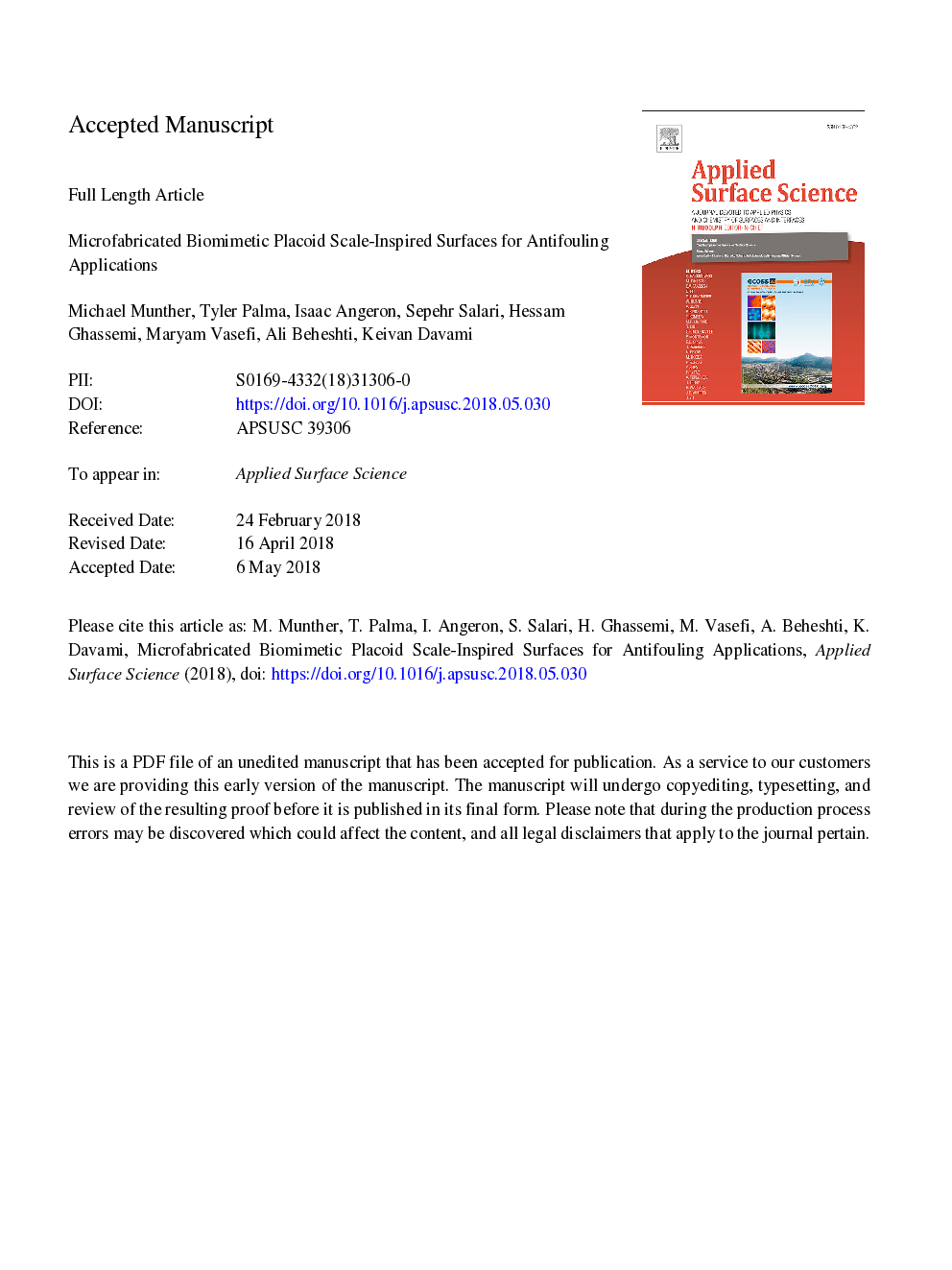| Article ID | Journal | Published Year | Pages | File Type |
|---|---|---|---|---|
| 7833332 | Applied Surface Science | 2018 | 20 Pages |
Abstract
Marine biological fouling or 'biofouling', the unwanted aggregation of aquatic organisms such as algae, barnacles, and marine microorganisms has been a detriment to maritime industries. Previous antifouling strategies included the use of toxic, biocide-containing paints; however, as humanity strives to lessen its environmental impact, a shift towards ecological deterrents which draw inspiration from nature are starting to be developed. In this work, the manipulation of the surface topography of nontoxic polydimethylsiloxane elastomer (PDMSe) was performed in order to mimic natural-occurring antifouling surfaces like those found on shark skin by means of a micro-molding technique using etched silicon molds. Previous polymer-based antifouling patterns which draw influence from shark skin have been successful in mitigating microorganism settlement; however, they lack a degree of biological accuracy as the features are of constant height. Our novel designs utilize various microfabrication techniques and micro-molding to generate placoid scale patterns with an engineered height gradient to deter organism settlement. Surface durability studies showed that the patterns can effectively keep their integrity under external sliding motion. Significant decreases in Escherichia coli (E. coli) settlement up to 75% were observed when measuring the effectiveness of pristine patterns, and up to 56% when patterns underwent extreme mechanical wear.
Related Topics
Physical Sciences and Engineering
Chemistry
Physical and Theoretical Chemistry
Authors
Michael Munther, Tyler Palma, Isaac A. Angeron, Sepehr Salari, Hessam Ghassemi, Maryam Vasefi, Ali Beheshti, Keivan Davami,
